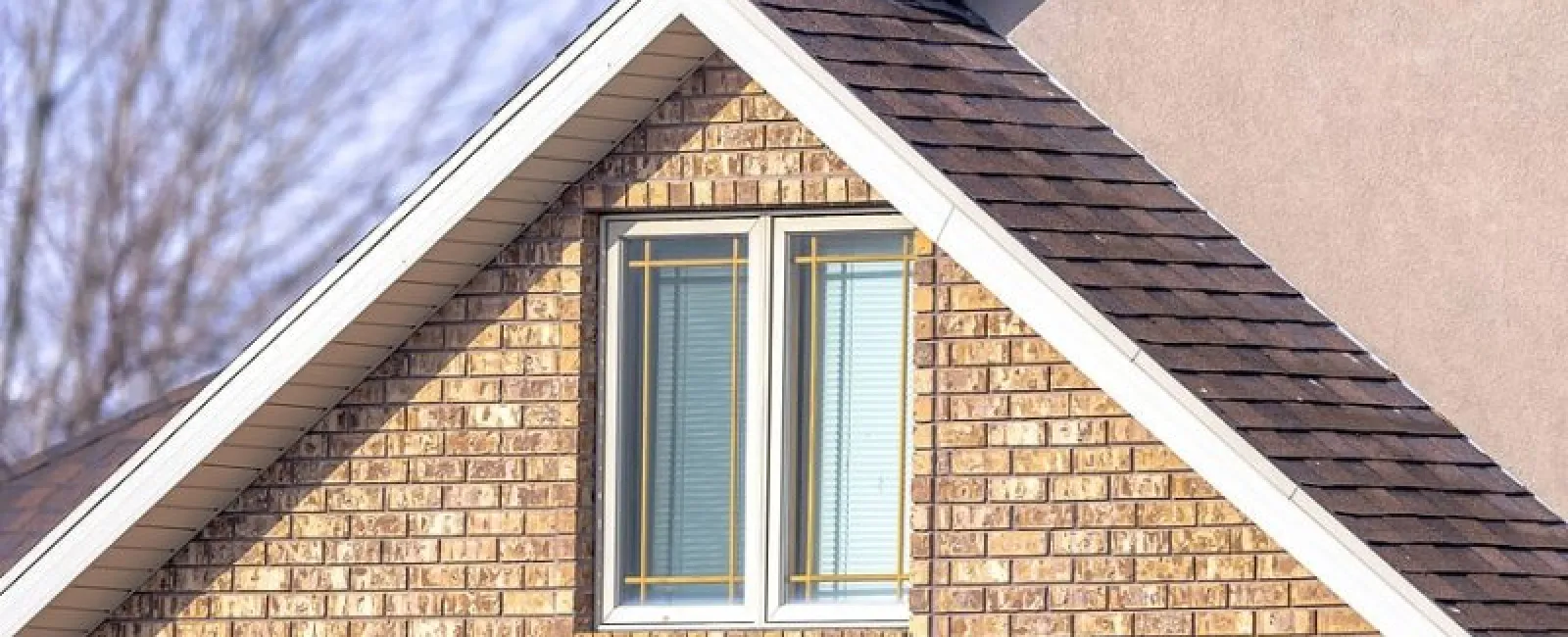When shopping for a home or considering an upgrade, the pitch of a home’s roof won’t gain as much attention as, for example, the kitchen or the bathroom. But roof pitch is an important feature of any home, with a number of different implications ranging from water drainage to the cost of maintenance to the storage space in your attic.

While a higher pitch offers certain advantages to a home, it can also create certain limitations and disadvantages. Here’s a look at the importance of roof pitch when understanding your home’s design and performance, as well as some easy tips on how to calculate roof pitch.
The Importance of a Pitched Roof
If a home or building’s roof didn’t have any pitch at all, it would be at a high risk of collecting standing water that ends up deteriorating the roof itself, presenting a serious and inevitable risk of leaking through the roof and into the building. Even on roofs that may appear flat to the naked eye, a slight pitch has probably been built into the roof to facilitate water run-off from rain and snow.
Pitched roofs are even more important in regions where snow can accumulate on a roof. The lower the pitch, the greater the amount of snow that can accumulate on the roof’s surface—and the weight of this accumulation could potentially break the interior structure of the roof itself. With a higher roof pitch, snow and heavy rainfall can be sloughed off before structural integrity becomes a concern.
Roof pitch can also have the following implications on a home:
- Available Attic Space: Higher roof pitches create more space for storage in an attic
- Construction Materials: The higher the roof pitch, the more materials required to frame and cover a roof.
- Energy Efficiency: Pitched roofs provide an energy-efficient home envelope, providing natural ventilation that reduces energy loss.
- Resilience to Wind: Research suggests that roofs with multiple slopes tend to offer the optimal resistance and durability in high winds.
- Roof Lifespan: Higher pitched roofs slough off rain, snow, leaf debris from trees and other materials that can degrade the roof’s integrity. This can lead to a longer lifespan of those roofing materials.
- Maintenance Costs: Steep slopes and sharp angles typically lead to higher costs during maintenance, as more safety equipment will be needed during the repair process.
Understanding the Minimum Roof Pitch
International building code guidelines recommend a minimum roof pitch of 1/4:12. This means that for every 12 inches of the roof’s run—which is the horizontal distance it travels as it covers a home—the elevation of the roof should change by at least 1/4 of an inch.
Keep in mind that the building code requirements for minimum roof pitch may vary from one location to the next. Similarly, maximum roof slope rules can vary by municipality and may be determined by the type of building being constructed. In general, it’s rare for a roof pitch to exceed a 45 degree angle, or a pitch ratio of greater than 12:12.
How to Determine Roof Pitch
The process of how to figure out roof pitch can depend on whether the pitch being measured is a blueprint for a building or a measurement of an existing building. On a blueprint, you can use a protractor to determine the angle of the roof’s pitch, and then convert this to a ratio.
A more accurate method of how to measure roof pitch, though, can be applied to both roof blueprints and existing roof structures. Start by measuring the run of the roof—from its edge to the midpoint, along a straight horizontal line—in inches. Then do the same for the rise, which is the gain in height of the roof along a straight vertical line, from its lowest point to its peak.
Divide the rise of the roof pitch by the run. The resulting number is the percentage gain of the rise to the run, which in most cases will be less than 100. To get the ratio for that roof, multiply that percentage by 12 and use it in the place of X in the run-rise ratio, X:12.
Take a roof where the rise is three feet and the run is nine-and-a-half feet. The rise converts to 36 inches, while the run converts to 114 inches. Divide 36 by 114, and the resulting figure is 31.58 percent. Multiply this number by 12, and the result is 3.79 inches. In this scenario, the run-rise ratio for your roof pitch is 3.79:12.
The pitch of your roof plays a significant role in the performance and durability of your home—and knowing this pitch can also help you choose the right materials built for your roof’s specific conditions. A professional roofing company can help you make the right decisions that will outfit your roof with the best layers of protection.



